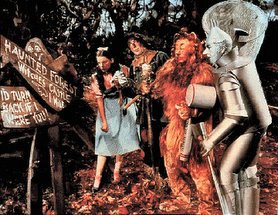Book Review - Meet You In Hell - Carnegie & Frick

Title: Meet you in hell: Andrew Carnegie, Henry Clay Frick, and the bitter partnership that transformed America
Author: Les Standiford
Publisher: Crown Publishers, 2005
Length: 310 pages, plus Preface, Acknowledgements, Notes from the Author, Select Bibliography, and Index
Carnegie Hall. Carnegie Mellon University. The Carnegie Library – not just 1, but 3000 of them throughout the English speaking world. Much of the legacy of Andrew Carnegie is that of his philanthropic efforts. In 1901 Andrew Carnegie received nearly $230 million from the sale of Carnegie Steel. He spent the rest of his life giving away almost all of that fortune.
Henry Clay Frick, Carnegie’s one-time partner at Carnegie Steel, directed that his mansion and personal art collection be converted into an art museum upon his death. His Pittsburgh mansion, Clayton, is a popular field trip site in Western Pennsylvania.
Andrew Carnegie was the founder of Carnegie Steel, and Henry Clay Frick founded HC Frick Coke, supplier to Carnegie Steel, who eventually became Carnegie’s business partner. But over time their relationship soured, and they became estranged to the point that, when Carnegie sought a meeting of reconciliation in 1919, Frick’s response was, “Yes, you can tell Carnegie I’ll meet him. Tell him I’ll see him in Hell, where we both are going.”
The intertwining of the lives and business dealings of Carnegie and Frick are the subject of “Meet you in hell: Andrew Carnegie, Henry Clay Frick, and the bitter partnership that transformed America” by Les Standiford. The book is something of a highly abbreviated biography of both men, concentrating on the time period during which Frick was the Chairman of Carnegie Steel.
The book spends a significant amount of time discussing the events surrounding the Homestead strike of 1892, which found Carnegie, who portrayed himself as pro-labor, conveniently spending the summer in Scotland while Frick managed the events of the strike, bringing in non-union workers and a detail of 300 Pinkerton agents. The confrontation resulted in the deaths of 3 Pinkerton agents and 7 strikers, with many others on both sides of the confrontation being wounded. One result of the failed strike was that union organizing in the steel industry was dealt a serious blow from which it did not recover until the 1930s. The strike also set in motion the events leading to the falling out of Frick and Carnegie, which took place over several years until Frick was finally ousted in 1900.
Despite this book’s title, it’s not solely about the conflict(s) between Carnegie and Frick. Rather, it’s a short and interesting history of two of the most prominent players in the rise of the steel industry in America. Brought together by the steel industry, they forged a successful business partnership, had some conflicts, and acrimoniously parted ways. Carnegie and Frick experienced the conflicts that are the norm among the giant egos of the business world, both past and present.
I found this to be an interesting book. I had heard of the Homestead Strike, but hadn’t learned any of its history. And I certainly knew the names of Frick, Carnegie, Phipps, Mellon, and other prominent Pittsburghers, but I didn’t know how they all fit into the Pittsburgh history picture. This book provides a good overview of these topics. Standiford does display a strong pro-union bias throughout the book, always referring to the replacement workers as “scabs,” for example, when detailing the events of the Homestead Strike. This makes it more difficult for the reader to distill the objective history from the author’s opinions.
I do recommend this book for readers who want to acquaint themselves with the names of Carnegie and Frick, as well as those looking for an overview of the birth of America’s steel industry, including a popular summary of the events of the Homestead strike. The book may pique the reader’s interest for further reading about these events. But even if this book is all that you ever read on these topics, you’ll be more educated for having done so.




0 Comments:
Post a Comment
<< Home